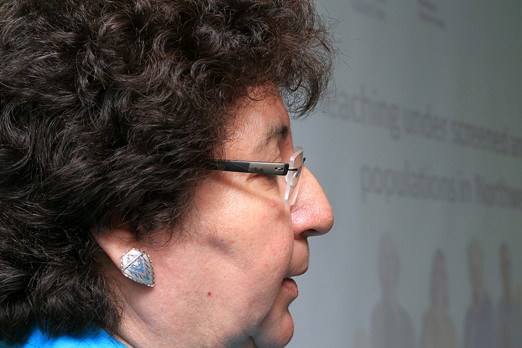With First Nations people dying of cancer at rates 20 to 30 per cent higher than the rest of Ontarians, the time to sit by idly and hope Aboriginals get the message of early prevention has passed, say local and provincial health officials.
On Wednesday they got a $100,000 boost from Cancer Care Ontario to go after the region’s most vulnerable and underserviced patients through a newly launched integrated cancer screening program.
Mae Katt, a nurse practitioner operating in Thunder Bay, said while breast cancer screening is available to all women in the province over the age of 50, because of the remoteness of many northern communities, it’s just not practical.
With Regional Cancer Care Northwest making recommendations for changes to the mobile screening coach to allow not only mammography but screening for diseases like cervical cancer through pap tests and colorectal cancer using the fecal occult blood test, one stop shopping makes it a much more practical venture, Katt said.
“Unfortunately in Northern remote communities our barrier to screening is transportation. The federal government does not pay for a woman to come out for a screening exam. So if there’s another reason to come out for a medical appointment, they will attach screening on to that.
“We’re trying to find ways where that federal policy will change where women can have access to not only breast screening, but also to cervical screening,” Katt said.
Part of the problem is the ability to recruit nurses to the North, and those that do come are often tied up with the more acute problems facing the community.
Screening and preventative measures too often fall by the wayside, Katt said.
The program should have a huge impact increasing screening rates, which in some communities have fallen as low as two per cent, 15 to 20 times lower than the provincial average, she added.
“It’s a big production to leave your community, to make sure that someone is looking after your family, to get on a plane and travel many miles, land at an airport and then meet a bus. So I think for people to go there and say, ‘Well, I’m not just going there for a 10-minute mammogram, I’m also going for a pap and I’m also going to learn how to do the colorectal screening,’ that for them will be a lot bigger motivator to want to make sure that they get to that appointment,” Katt said.
“Then they know for two more years they don’t have to worry about screening.”
Prevention is the best medicine, said CCO vice-president of prevention and cancer control Linda Rabeneck.
The underserviced or never screened population in Ontario is much larger than she’d like, which is why they’ve committed about $1.5 million to the program in 13 locations across the province.
Nowhere is the need greater than in the Far North and Aboriginal communities in particular.
“They have a high burden of disease and we know when they have cancer diagnosed it’s at a more advanced stage,” she said. “So there’s a huge opportunity to do screening, up the screening rates, detect many more cancers early and reduce the number of deaths for these three cancers that we’re screening for.”
Only 34 per cent of Aboriginal women with breast cancer are diagnosed during Stage1 of the disease, as compared to 44 per cent of non-First Nation women.
The program is expected to be up and running by next November.
Sign in or register
- Messages
- Post a Listing
- Your Listings
- Your Profile
- Your Subscriptions
- Your Likes
- Your Business
- Support Local News
- Payment History
Registered Users
Already have an account?
New Users
Create a free account.
